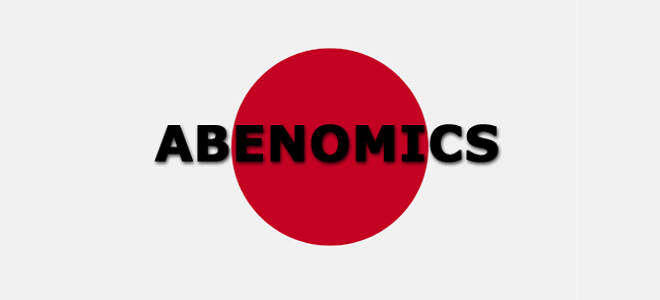Advertisement
Advertisement
Abenomics – A Failure Of Economics, Politics & Government
By:
The rein of Prime Minister Abe could abruptly come to an end as he decides on the 2nd installment of the sales tax increase. The yen remains much stronger
The rein of Prime Minister Abe could abruptly come to an end as he decides on the 2nd installment of the sales tax increase. The yen remains much stronger than the government and the central bank would like. At the recent G7 meeting the US firmly warned Japan about intentionally devaluating the yen.
The yen picked up this week after the G7 wagged its finger at Japan over threats to weaken its currency, reminding Tokyo of previous commitments not to intervene in forex markets. The currency clash was in the spotlight as finance ministers from the club of rich nations met in northern Japan at the weekend for two days of talks focused on how to boost the global economy. In response, Japan’s finance minister Taro Aso said he told his US counterpart that Tokyo was merely reacting to “one-sided, abrupt, and speculative moves” in forex trading.
Japanese Prime Minister Shinzo Abe has seen better days. His popularity has tumbled, and his flagship economic policy is failing to produce the goods. At least, that’s a view growing in popularity both in Japan and abroad. The USD/JPY went from 80 to 125 in the span of a few years. The short history is this: Japan got a radical new prime minister, Shinzo Abe, who hired a radical new Bank of Japan head, Haruhiko Kuroda, who implemented a radical program of quantitative easing that drove asset prices up and the exchange rate down. This was known as “Abenomics.”
Abe came to power in 2012 with a major mandate. He was going to revitalize Japan’s flaccid economic performance, ending decades of deflation. For this purpose, he brought in Haruhiko Kuroda as Bank of Japan governor. Kuroda launched a massive QE program and introduced a 2% inflation target. QE was later increased in 2014. Abe set about with fiscal stimulus and supply-side economic reform.
It’s also impossible to divorce Abe’s economic strategy from his geopolitical aims. He is a committed conservative with a revanchist international stance, not a centre-left Keynesian of the sort more familiar in the west.
The economy is in a good state, on the face of things. At 3.3%, Japan’s unemployment is at an enviable level, one which it’s unlikely western economies will reach at all. In fact, Japan’s labour market at its very worst rarely records unemployment of over 5%. For a country like France, unemployment doesn’t fall that low at the best of times. But Abe can’t take full credit for the decline in unemployment, something that was beginning before he took office late in 2012.
The plan got off to a roaring start. Once reluctant to engage in unconventional monetary policy, the Bank of Japan embraced Abe’s vision and launched a huge bond-buying program. The central government turned on its spending tap. Markets rallied and the yen plummeted against the dollar.
The idea was that as prices rose and businesses profited, they would pass on a bigger share of earnings to workers, who would spend more on goods and services. If it worked, the “virtuous cycle” would deliver sustained economic growth.
The program, however, has faltered. Wage growth is lackluster, and inflation remains far below the central bank’s 2% target. Gross domestic product shrank at an annualized pace of 1.2% in the second quarter, and there’s evidence that the economy may have fallen back into recession in the third quarter.
The prime minister, who could remain in his post for three more years, has also fired “three new arrows.” The measures, however, have been criticized for a lack of detail and ambition. Abe failed to specify how long one arrow — a pledge to boost nominal GDP by 22% — would take to materialize.
The Japan Time sums it up very well saying Abenomics has long had an intellectual-honesty problem. It sought to treat the symptoms of what ails Japan (deflationary pressures) and not the underlying illness (a complete lack of confidence in the future). That’s why the Bank of Japan’s unprecedented yen-printing program enriched hedge funds, not households. It’s why pledges to create a Japanese Silicon Valley and unleash a startup boom amounted to swamp gas. It’s why, with the exception of Foxconn Technology buying Sharp, foreign buyers aren’t rushing to Japan.
About the Author
Barry Normanauthor
Advertisement
